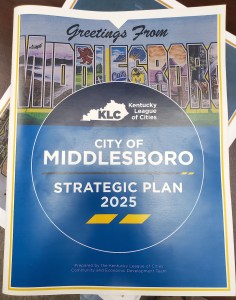Solar energy cuts cost for Long’s Pic Pac and customers
Published 2:58 pm Friday, September 20, 2024

- Long’s Pic Pac in Pineville projects an estimated cost savings of at least $15,000 per year from the solar array and battery storage that have been installed at the store. (Photo sourced from Resource Rural)
From Resource Rural
At Long’s Pic Pac in Pineville, Kentucky, Mike Long is finding an innovative way to cut down on electricity costs. Solar panels cover the roof of the small-town grocery. A 60KWh battery allows Long’s Pic Pac to store solar energy, vastly reducing the peak demand charges that make up more than half the store’s monthly power bill.
Long is the general manager of the grocery business started in 1964, when his father Arthur “Ray” Long got a $3,500 loan co-signed by an appliance store owner who knew Ray from watching him play football. Mike was only a few years old when his father’s grocery store opened. He grew up with the business.
Today, he’s determined to keep Long’s Pic Pac the grocery store of choice for Pineville, a town of about 1,630 people in Southeastern Kentucky. “There’s only one cell tower,” Long said of Pineville. “You can run around the whole town in about three miles.”
Long thinks Pic Pac might be the first grocery store in Kentucky to install solar with battery capacity to lower the high demand charges of refrigeration, deli ovens and fryers. A Rural Energy for America Program (REAP) grant from the U.S. Department of Agriculture funded 40% of the project.
The business is also eligible for a 30% federal tax credit on the 143kW solar array, with a longer depreciation because Pineville is a low-income community. The median household income in Pineville was $27,159 in 2022, according to the U.S. Census Bureau.
In the Appalachian region of Kentucky, more than 20 percent of the population regularly experiences hunger, and keeping the lights on in rural grocery stores helps reduce food insecurity. Long projects an estimated cost savings from the solar array and battery storage of at least $15,000 per year. That savings could be used for staffing in the perishable departments and offset added field costs in delivery.
Grocery stores run on a razor-thin 2.2% profit margin, making them among the least profitable industries in the U.S. “Tight margins are one of the reasons why many rural places have seen full service stores struggle to keep their doors open,” said Long.
Long learned about the REAP grant through the Mountain Association, a nonprofit that works to help Eastern Kentucky transition to a more diverse, sustainable and resilient economy. Solar Energy Solutions installed the array.
Long expects to be able to pay back the cost of the project in four years. At the grocery store, power can cost as much as $78,000 annually. On a monthly bill, the power charges might be $2,600, while the store might pay $3,900 for the “demand charge,” based on the highest amount of power used.
Around 2017, Long’s Pic Pac upgraded the refrigerated cases in the produce meat and deli departments with motion-detector lighting and doors to conserve energy and freshness, using a then-20% REAP grant. The store will be replacing freezers and an older refrigeration motor room later this year with a REAP grant. Long said that competition for energy savings grants is increasing as more people hear success stories.
He aims to be a small-town store ahead of the curve. “None of the chains have solar,” he said, adding that he doesn’t know of any chains using solar like Long’s Pic Pac. “We’ve got more green, newer stuff than any of them.”
As with the grocery store, “people take pride in the town,” he said. Long’s Pic Pac also draws on customers from surrounding communities and unincorporated areas, despite the presence of larger stores within a 15-minute drive. Several thousand customers a week walk through the doors at Long’s Pic Pac.
“Our sales floor is only 11,500 square feet,” Long said. “We’re small here, but everybody feels like it’s a small thing that we make the most out of,” he said.







